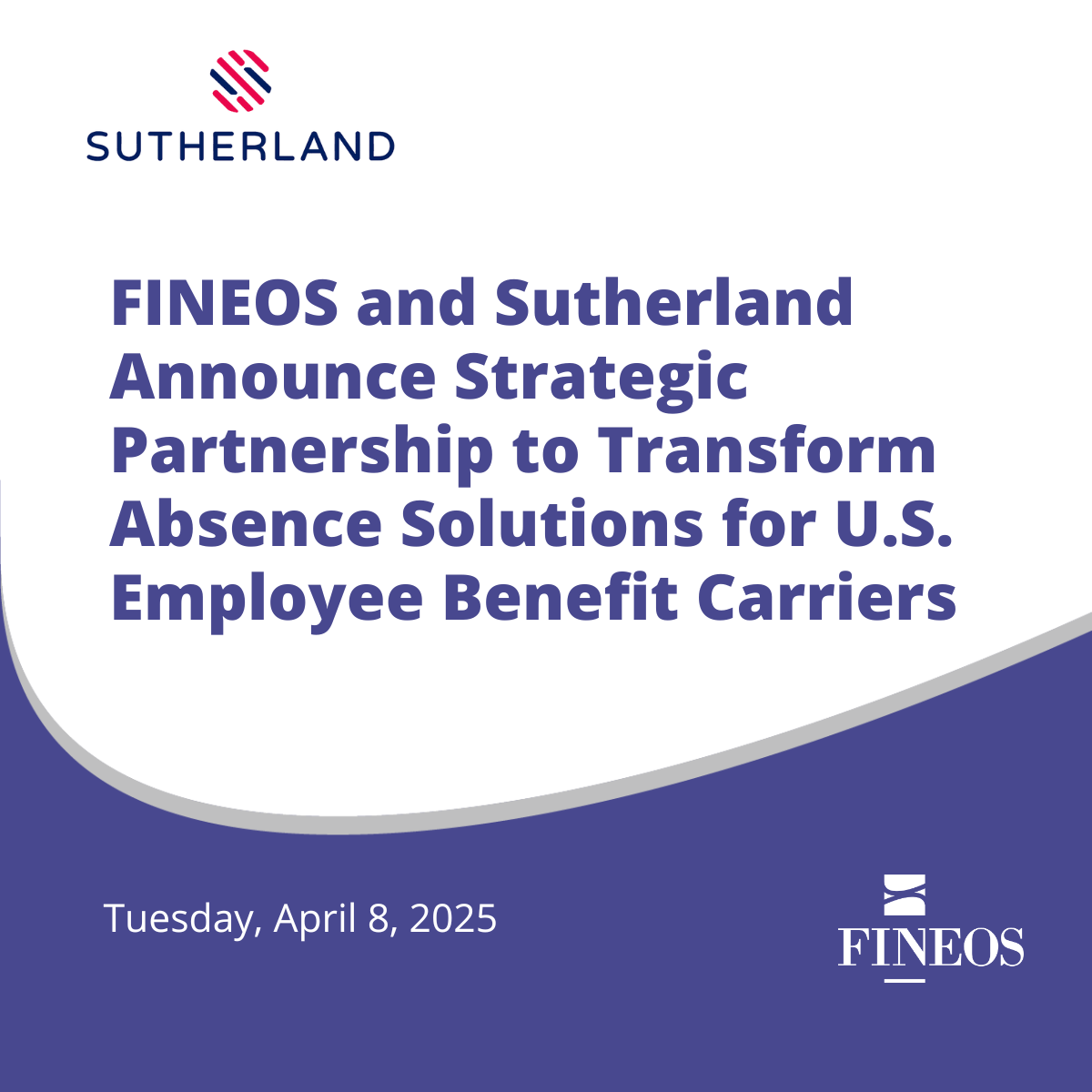Original article appeared in BenefitsPRO February 2021
Dan Watt, VP Product Management, FINEOS discusses why the insurance industry needs to embrace digital transformation in 2021.
Going into 2020 we assumed digital transformation within the employee benefits industry would continue at a similar pace and scope as 2019. But everything changed when the COVID-19 pandemic hit. The demand for advanced digital capabilities from employee benefits carriers boomed seemingly overnight, a direct response to rapidly changing employee expectations and the urgent need for remote functionality.
As a result, employers are now placing high priority on these capabilities when choosing a carrier for their employee benefits. Guardian Life recently reported that 34% of employers would recommend switching to a leading carrier with real-time member transactions for nonmedical group benefits. But by understanding employer needs and embracing digital transformation in 2021, carriers can gain a competitive edge.
Voluntary trending
Due to the pandemic, we know employees now pay more attention to selecting benefits than they have in previous years. A 2020 MetLife survey found that 75% of employees surveyed had more particular benefits they were interested in than in 2019. Additionally, of one thousand full-time workers, 48% indicated that open enrollment is more important this year than last. Among the benefits in high demand for 2021 are voluntary benefits like critical illness, accident insurance, and hospital indemnity as well as enhanced mental health benefits.
This completely makes sense when you consider the types of care people were dealing with in unprecedented numbers last year; mental illness, critical illness, and hospital visits. These hypothetical situations became very real for many people and impacted all ages and demographics. Because of this, we can expect to see an increase in demand for employers to provide access, either via sponsorship or funding, to these types of voluntary coverage options going forward.
In addition, this year we’ll see the continuation of a trend toward nontraditional voluntary products. These include products like student loan assistance, elder care, and pet insurance. After all, those “COVID pets” do come with vet bills.
In order to meet demand for the voluntary products employees are interested in, adapting existing products and developing new ones quickly will be key. Carriers can leverage modern technology this year to streamline their processes and provide unrivaled speed to market for their customers. Many employees are feeling a strong need for these products, and customers may not wait around if another carrier can already provide what they’re looking for.
The biggest unknown is the economy. Economic growth, expendable income, and consumer spending directly impact voluntary benefit enrollment. The broader economic recovery will have a direct impact on whether the voluntary benefits boon we saw last year was a one-time pandemic reaction or an indicator of future buying preferences.
Regardless, digital transformation will be key for carriers to keep up with changing trends in voluntary products.
Absence Management demands customer-centricity
In 2020, states and municipalities, and even our federal government, rushed to pass laws that ensured employees would have job protection and/or paid leave available during the pandemic. This put pressure on employee benefits carriers to enable their customers to adapt quickly, stay in compliance, and provide their employees with clear guidance in filing claims. Customer centricity became a necessary part of absence management solutions.
As new leave legislation continues to be introduced in 2021, it will be essential for carriers to keep up with the constant changes. What does this have to do with digital? Everything. Modern technology solutions are needed to make this complicated process frictionless for the carrier, the employer, and most importantly, the employee.
The customer looks to the carrier to know what benefits, accommodations, and job protections are available based on their scenario. But absence management is complex. Coordinating, calculating, and adjudicating leave laws, accommodations, and benefit eligibility is daunting without the proper technology. Factor in the 68 laws passed in 2020, the 286 bills we saw introduced during the first month of 2021, plus the potential for many more and you have a process that can cripple a carrier’s operation. This can leave employees confused, or worse, misinformed on their leave options. The stakes are high.
Customers expect a smoother process than last year. Carriers will have to deliver a simple digital experience with guidance for customers and faster turnaround times on claims.
Continued virtual enrollments
The problems that arose for carriers surrounding remote work in 2020 still need solutions in 2021. Before the pandemic, a significant part of the population was still enrolled via in-person events in the conference room or cafeteria. For this population, how do you engage with employees who no longer go into the office?
2020 saw quick fixes to this problem with video calls and emailing scanned documents. But the expectation for enrollment in 2021 is that carriers will enable employers to provide robust online enrollment experiences with built-in guidance for their employees. This is even more challenging considering the increased demand for voluntary products.
To deliver digital, carriers have to access the other “d” word we often forget about; data. Enable API-first solutions to access your organization’s data and you can offer a tailored digital enrollment experience. Customers will be able to use any app, portal, or web experience to verify benefits and confirm or add coverage throughout the year.
The pressure is on for carriers to effectively communicate valuable plan information, efficiently field questions, and accurately enroll employees all through a virtual experience in 2021 and beyond.
What carriers can do to keep up
As we saw in 2020, change can come out of nowhere. The new year is taking us toward an industry that is more virtual, volatile, and fast-paced than ever before. Carriers need tools to drive new products and enhancements quickly. They need speed to market, and modern systems purpose-built for the employee benefits industry can support that.
Expectations for more product options, greater customer centricity, and better remote customer experiences will only continue to rise this year. Carriers that want to remain competitive and react quickly to the market will have to meet these expectations by investing in dynamic core solutions that can support the complexity of evolving employee benefits. They can do so by deciding that the day for digital transformation is today, and realizing the way forward is dependent upon modern internal core systems.
See more from Dan Watt. We invite you to watch Life is More Complete in a Suite.


